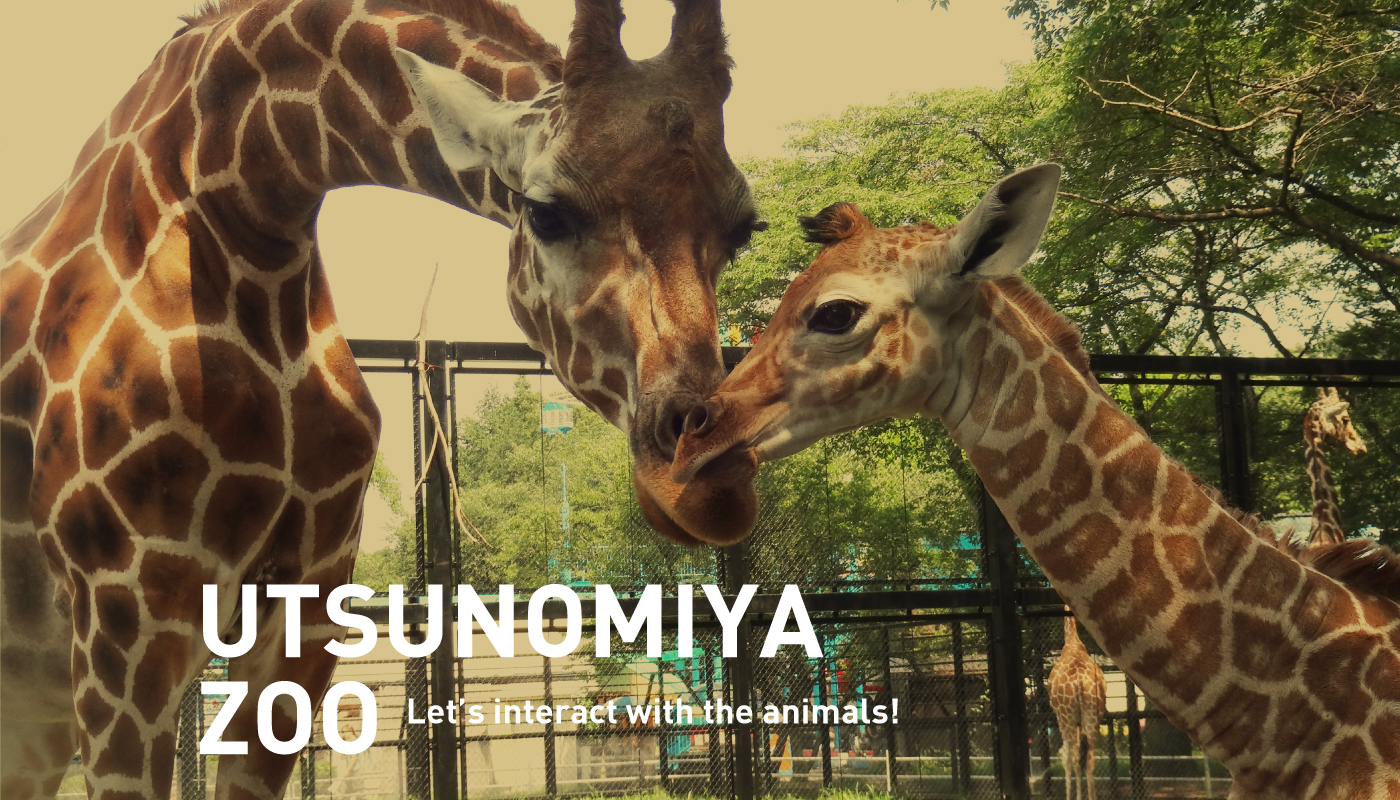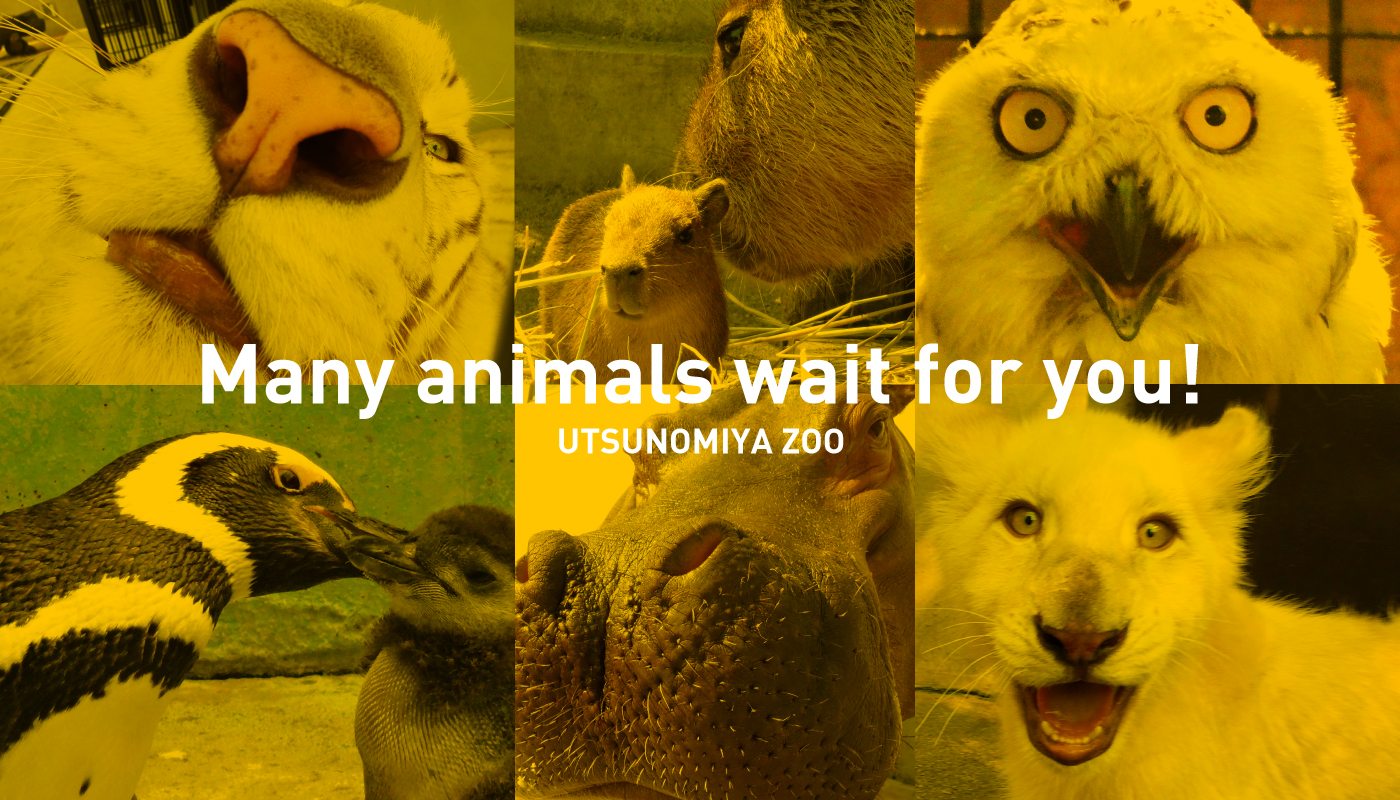CONCEPT
Interactive theme park of
“Nature, Animals and Children”.
Utsunomiya zoo is situated in the north part of Utsunomiya City in Tochigi prefecture.
It is a concept zoo where animals, nature and children can interact.
Visitors can have close contact with some of the animals, and this is a great attraction for this zoo.
We believe not only in the fun part of interacting with animals and nature,
but also in putting big efforts into the educational aspect of conveying a message to children that
there are rules to be followed when interacting with animals.
Children are actually able to touch animals and using their senses
can be aware of the size, the smell, and the warmth of the live animals
which are beyond the experience of just reading picture books.
Through this experience, we hope it will provide an opportunity for children
to cultivate an emotional connection with animals.
Please bring your family, children, friends to interact and learn about our animals!
WELCOME TO OUR ZOO
Utsunomiya zoo is a concept zoo where animals, nature and children can interact.
Visitors can have close contact with some of the animals,
and this is a great attraction for this zoo.
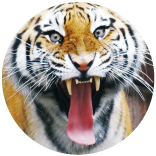
Large
predators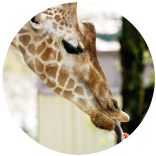
Herbivores
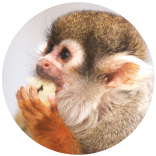
Monkeys
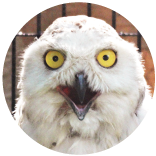
Birds and
reptiles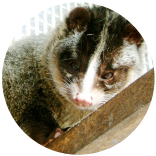
Small
carnivores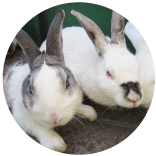
Petting
animals
-
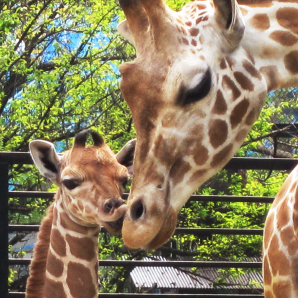
Giraffe
【zoological name】Giraffa camelopardalis
【Classification】Even-toed ungulates,
family GiraffidaeThe body length of a giraffe from top to toe goes beyond 4 meters and they are the tallest of all animals. With its long neck, the giraffe is able to eat the leaves from high trees which other animals are not able to reach. -
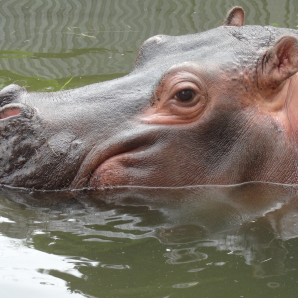
Hippopotamus
【zoological name】Hippopotamus amphibius
【Classification】Even-toed ungulates,
family HippopotamidaeThe hippopotamus usually spends most of its time in the water or near the waterside during the day. It can weigh between 1 to 3 tons and with its heavy weight it looks slow but it can actually run as fast as 40 to 50 km per hour. -
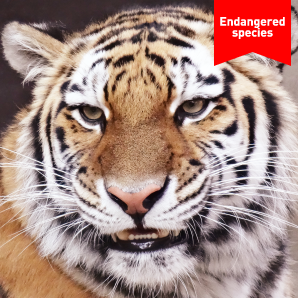
Siberian Tiger
【zoological name】Panthera tigris tigris
【Classification】Carnivora, family FelidaeThe Siberian tiger inhabits only the coastal region of the Russian Far East and the river basins of Amur and Ussuri. It has the largest body size of all the family Felidae, and preys on wild boar, roe deer, musk deer, and sometimes bears. Due to the environmental destruction of their habitat and poaching, it is now in danger of extinction. -
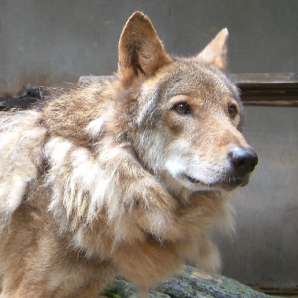
Eastern Timber Wolf
【zoological name】Canis lupus lycaon
【Classification】Carnivora, family CanidaeThe eastern timber wolf lives in the forests of the northeastern side of Canada. It has a grayish brown coloration and it has a relatively large body. It preys on deer, rabbit, wild boar, etc. It belongs to the family Canidae and normally lives within a social group centered around parents and child. -
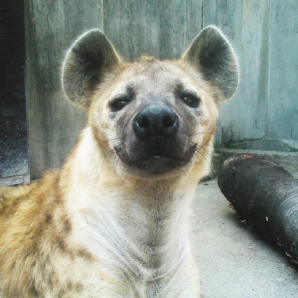
Hyaenidae
【zoological name】Crocuta crocuta
【Classification】Carnivora, family HyaenidaeHyenas are distributed to the south of the Sahara Desert in Africa. The striped hyena is distributed in Turkey, the Arabian Peninsula in the Middle East, and in throughout southwestern Russia, and India. It has extremely powerful jaws that can crush the bones of its pray that many other carnivorous animals leave behind. It can digest and absorb the organic constituent from these bones.
Horns, bones and hoofs which it cannot digest, will be regurgitated. -
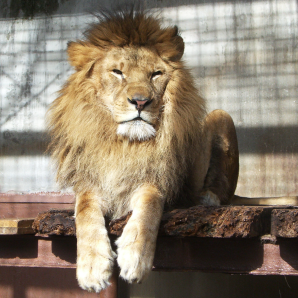
Lion
【zoological name】Panthera leo
【Classification】Carnivora, family FelidaeThe lion used to be widespread in Africa, west Asia, and India. However the population has become extinct in many areas. The only lion population is now to be found in southern Africa and parts of India.
Lions form a “pride” which consists of a few adult males and females. They live life in this pride which is a rare trait for the family Felidae. -
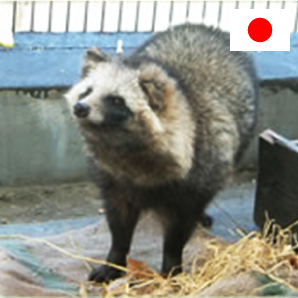
Raccoon Dog
【zoological name】Nyctereutes procyonoides
【Classification】Carnivora, family CanidaeRaccoon dog is very well known animal throughout Japan but is rarely known animal in Europe and the United States.
It used to live in northern America however it became extinct 10,000 years ago.
The raccoon dog habitually lives in the hole of a tree or of a hole in a mountain side. At night, it ventures out of its hole and feeds on plants, insects and small animals. -
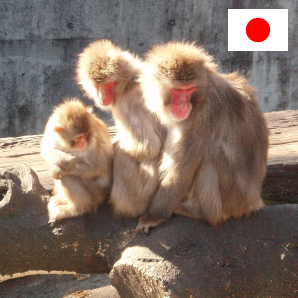
Japanese Macaque
【zoological name】Macaca Fuscata
【Classification】Primates, family CercopithecidaeThe Japanese Macaque is native to Japan and is widespread throughout the broad-leaved forest zone in Japan, except Hokkaido and Ryukyu Island. As it grows older their face and bottom will turn red, which is a unique characteristic of the Japanese Macaque. -
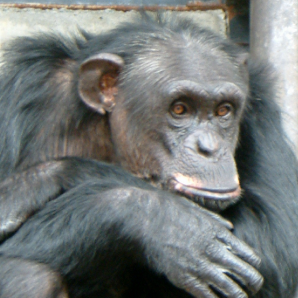
Common Chimpazee
【zoological name】Pan troglodytes
【Classification】Primates, family HominidaeThe common chimpanzee is an intelligent animal able to use tools like a human being. It can use stones and sticks to crack nuts, and also to dig holes for insect. Not only is its appearance similar to a human being, but also its behavior and facial expressions are similar to those of a human being. -
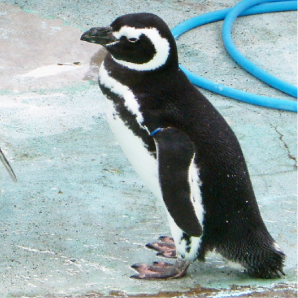
Magellanic penguin
【zoological name】Spheniscus magellanicus
【Classification】Sphenisciformes,
family SpheniscidaeMagellanic penguin lives between the southwest of the Atlantic Ocean and the southeast of the Pacific Ocean.
It lives in large flocks and it preys on squid, fish, and brit. It is very good at swimming and it can dive up to 90 meters under the water. -
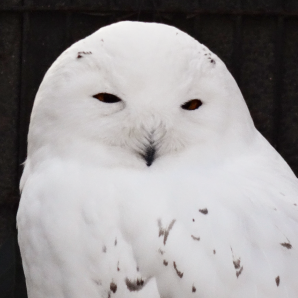
Snowy owl
【zoological name】Nyctea scandiaca
【Classification】Strigiformes, family StrigidaeSnowy owls live near the Arctic in Eurasia, the northern region of North America and Greenland. Females have more flecks of brown plumage than males, and also females are larger in body size. Males are as white as snow, and beautiful. -
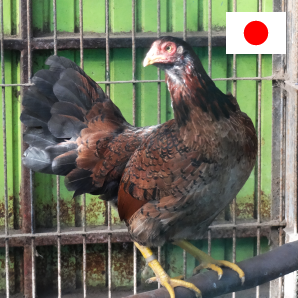
Satsuma Native Fowl
【zoological name】Gallus gallus var.domesticus
【Classification】Galliformes, family phasianidaeThe Satsuma native fowl was designated as a special natural treasure in Japan, and has appeared in the historical drama series “Segodon” on NHK TV. The fowl is indigenous to Japan and historically it has been bread for display as well as for cock fighting. The main characteristics of the Satsuma native fowls are in having long legs, a beautiful and long tail, and sharp-eyes. It also has a fiery temper.

At Utsunomiya zoo, visitors can feed the giraffes and elephants. Please enjoy the close contact and appreciate the size and warmth of these beautiful animals!!
※The animal feed is strictly only to be purchased from the zoo. Only this feed can be given to the animals.
PARK MAP
Utsunomiya zoo is a popular place for children to cultivate an emotional connection with animals.
The amusement park along with the zoo is for children and adults to enjoy time together and to experience their dreams.

ACCESS
- From Narita International airport

- From Haneda airport

- From Utsunomiya station
-
Take the Kanto bus and get off at the ”Shimokanai” bus stop and from here it's a 5 mins walk.
From JR Utsunomiya station West Exit, take the “Line 8 bus” (bound for Sannoudanchi, Nikko, Ishinada, and Funyuu) and get off at the “Shimokanai” bus stop.

GUIDANCE
- Opening hours
- Standard opening (March - December) 9:00~17:00
Winter opening (Mid January – End of February) 9:30~16:30
- Closed days
- Open throughout the year
| Ticket prices | Individuals | Groups | ||
|---|---|---|---|---|
| Adult※1 | Children※2 | Adult | Children | |
| Zoo and Amusement park | 1,500yen | 700yen | 1,000yen | 500yen |
| Swimming pool Children over 3 years old |
700yen | 400yen | 600yen | 300yen |
| Special combination ticket Zoo, Amusement Park and Swimming pool |
1,700yen | 800yen | 1,300yen | 600yen |
※ 2:Children: 3 years old - Junior high school students. (revised since 1st February 2023)
※ Group discounts are available when there are 15 + people visiting together.
※ There is a discount for educational group visits.

